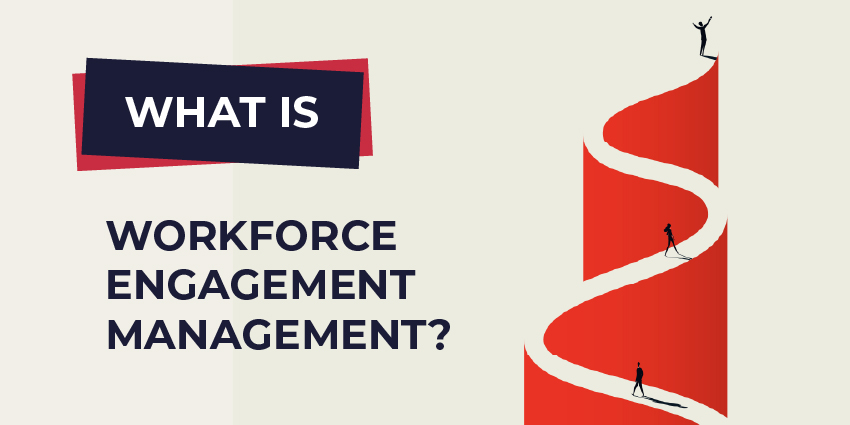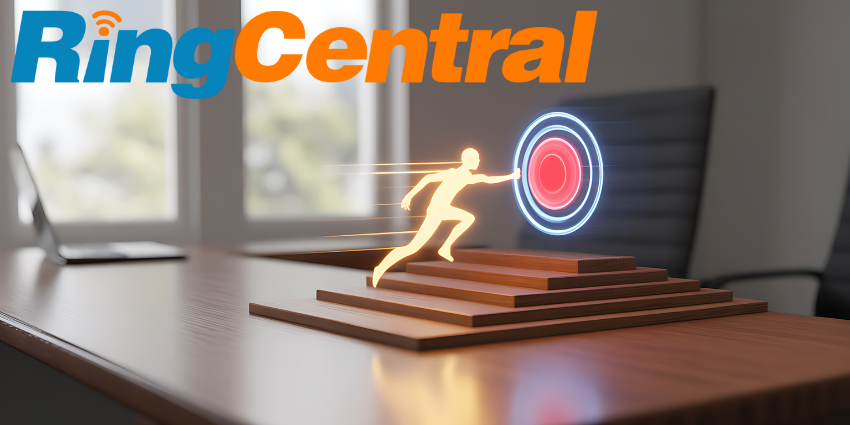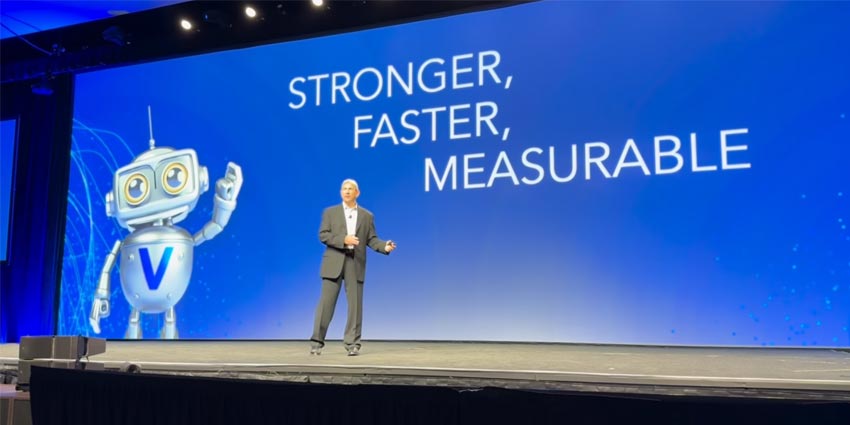Workforce engagement management is an approach to using software, tools, and strategies to improve employee engagement, satisfaction, and performance. But it goes further than that.
Today, companies aren’t just being measured on speed or resolution rates. They’re being measured on how it feels to do business with them.
That feeling, the tone of a conversation, the empathy in an answer, the confidence in a response; these usually comes down to one thing: how supported the agent on the other end actually feels.
Workforce engagement management is the connective tissue that keeps human-led customer experiences from falling apart under pressure.
Originally born from workforce optimization (WFO) – which focused on labor cost, scheduling, and productivity – workforce engagement management expands the scope. It adds intelligence, coaching, flexibility, and voice-of-the-employee feedback into the equation.
The business case is obvious: high agent churn is expensive. Disengaged teams drag down CSAT and NPS. Frontline burnout doesn’t just affect morale; it affects every metric a CEO cares about.
But the strategy isn’t just HR’s problem. WEM cuts across operations, IT, and customer leadership. In modern enterprises it’s becoming foundational to everything from digital transformation to AI-readiness.
What Is Workforce Engagement Management?
So, what is workforce engagement management?
WEM software is a suite of technologies designed to improve the day-to-day experience of employees and agents. It’s there for the people answering calls, handling chats, resolving issues, or keeping the service engine running behind the scenes.
WEM platforms bring together previously siloed functions like:
- Workforce forecasting and scheduling (WFM)
- Quality assurance and interaction scoring (QM)
- Learning and coaching workflows
- Performance dashboards and gamification
- Real-time feedback and voice-of-the-employee programs
- AI-powered assistants and agent-facing automation
The best platforms do all of this across cloud environments, hybrid teams, and global time zones, with as little admin as possible. What really sets the WEM model apart is that it’s designed for people, not just processes. Vendors are building tools that offer real-time coaching prompts, simplified self-scheduling tools that actually consider agent preferences, and dashboards that monitor burnout.
WEM has become a strategic partner to:
- Operations: by tightening resource alignment and reducing downtime
- CX leaders: by lifting customer sentiment through empowered agents
- IT and digital teams: by enabling automation without alienation
- HR and L&D: by tracking skill development in real time, not quarterly
It also connects tightly to other pillars in the modern CX ecosystem, from ERP systems to business intelligence platforms.
WEM vs. Legacy Workforce Tools: Understanding the Evolution
Talk to any enterprise ops lead or CX architect about workforce software, and you’ll probably hear this first: “We’ve got some of that already.”
What they usually mean is WFO, WFM, or a quality management system that hasn’t been updated in years. Somewhere along the line, it all blurred together. But there are differences to be aware of.
- Workforce Optimization (WFO): This is the legacy stack. Workforce optimization was built for scale, not flexibility. It’s a system of record for making sure the right number of people were in the right place at the right time, with as little waste as possible.
- Workforce Management (WFM): Forecasts, schedules, rosters. If WFO is the umbrella, WFM is the spine. It calculates expected volumes and assigns shifts accordingly, across voice, chat, email, social, sometimes even back office tasks.
- Quality Management (QM): Every enterprise has some version of this. A system that records calls, tracks disclosures, and grades interactions. Some still use spreadsheets. Others have automated tools that flag risky phrases or negative sentiment.
Workforce engagement management changes the lens. It doesn’t just track productivity or performance; it helps create the conditions where productivity actually happens.
It connects scheduling with well-being. Performance with recognition. Coaching with data. It gives agents the ability to swap shifts, track progress, and get live feedback without jumping through three systems and two supervisors.
The best WEM software listens to agents as much as it monitors them. It surfaces burnout risk, not just missed KPIs. Plus, it turns “manager reviews” into live, AI-driven guidance when it matters most, in the middle of a conversation, not the end of the month.
Essential WEM Capabilities for Modern Contact Centers
Plenty of platforms claim to boost engagement. But WEM software is different, not just because of what it includes, but because of how it connects those features into the day-to-day flow of work.
Here’s what defines leading WEM solutions in 2025:
AI-Powered Forecasting & Scheduling
WEM starts with smarter staffing. AI tools predict contact volume across channels (voice, chat, social, email), then build schedules around both demand and agent availability, including preferences and skills. Some systems, like NICE EEM, even auto-adjust shifts intra-day to fill unexpected gaps.
Real-Time Quality Management
Traditional QM scores interactions after the fact. WEM platforms now layer conversational analytics, real-time transcription, and auto-suggestions to help agents course-correct mid-call, not after it’s too late. They go beyond quality monitoring and call recording, with real-time insights.
Performance & Gamification Dashboards
Agents and supervisors get tailored dashboards that show key KPIs from AHT to CSAT, alongside gamified goals, rewards, and badges. Not just for fun – for focus. It works: a Gallup study found gamification boosts productivity by up to 14% when combined with coaching.
Learning & Development, Embedded
WEM software often includes integrated learning management system (LMS) modules, allowing supervisors to assign training based on performance data, not gut feel. Employees get regular microlearning nudges tied to real-time metrics. They’re smart, targeted, and actually used.
Voice of the Employee (VoE) & Sentiment Tracking
Feedback tools are embedded into most leading WEM platforms. Pulse surveys, in-session sentiment tagging, eNPS trend tracking. All designed to give leaders a line of sight into engagement, before it becomes attrition.
Hybrid-Ready Scheduling & Self-Service
Self-scheduling. Mobile shift swaps. At-a-glance schedule visibility. In a hybrid world, these features are increasingly crucial. Companies don’t just need to manage employee schedules; team members need to be able to make shift changes themselves.
Measurable Business Impact: The ROI of WEM Solutions
Ask any enterprise CX leader where they’re losing ground, and chances are the answer isn’t tooling – it’s people. Attrition, disengagement, inconsistent performance. The fundamentals. The truth is, most of it’s avoidable if the systems around the work actually support the people doing it.
That’s the core promise of workforce engagement management in 2025. It’s not just better data or cleaner interfaces, but an operational model built for sustained, scalable performance: one that integrates AI, learning, flexibility, and accountability into the work itself.
Here’s where the return on investment becomes undeniable:
1. Serious Retention Improvements
Contact centers have a talent problem. The work is hard, the pressure is growing, and legacy systems aren’t built to reduce either. The result? Enterprise-level attrition rates of 35%–45% are still considered “normal”, and the true cost per lost agent runs deep:
- $10,000–$15,000+ in replacement and training costs
- Knowledge loss
- Disrupted team continuity
- CX instability, especially for high-value customers
WEM solutions counter this with structure. They allow agents to:
- See progress, not just tasks
- Adjust schedules to fit real lives
- Receive feedback that’s timely and specific
- Access growth paths without needing to chase them
This is what shifts perception from “just a job” to a role worth keeping.
2. CX That Starts From the Inside Out
What drives true loyalty, especially in high-emotion, high-complexity interactions, is the confidence and care on the other end. WEM software makes that possible by:
- Flagging sentiment changes in real time
- Providing AI-suggested prompts during live interactions
- Helping agents manage stress levels and emotional loads through pacing and workflows
- Tying the voice of the employee (VoE) insights directly into customer journey metrics
When agents feel heard, supported, and prepared, they’re more likely to listen, support, and solve.
3. Operational Control Without the Micromanagement
This is one of the reasons contact center leaders actually like WEM: it puts control back in their hands without overloading supervisors or requiring three tools to do one job.
Key benefits from the ops side include:
- AI-powered staffing models that adjust by hour, not just day
- Intraday management tools that detect gaps, absenteeism, and surges in real time
- Blended service support: voice, chat, async messaging; all tracked against unified KPIs
- Integration with CPaaS platforms to connect agent workflows with external customer comms
WEM helps ops teams run smoother shifts, make smarter staffing calls, and prevent fire drills before they start. It turns guesswork into decision science.
4. A Feedback Loop That Actually Works
Traditional employee feedback processes are often slow, vague, and almost never actionable in the moment. WEM makes engagement and feedback part of the actual workflow:
- End-of-shift sentiment pulses
- In-the-moment feedback tagging
- eNPS scores tied to performance windows
- Manager dashboards showing team trends in real time
Instead of waiting for problems to surface, WEM lets companies track friction as it builds, and respond before people check out.
5. A Bridge to the AI-Enabled Future of Work
AI isn’t just for self-service chatbots. The most forward-looking WEM platforms are already embedding it directly into the agent experience, not to replace humans, but to extend their capabilities.
- Smart Assist: Live prompts during customer interactions
- Auto-tagging of performance triggers and coaching moments
- Adaptive learning that updates training based on new behaviors
- Workflow routing that adapts to agent strengths and availability
- Emotional analysis to detect frustration and disengagement on both the agent and customer side
Some companies are even experimenting with systems that empower leaders to manage AI agents and human employee workflows on the same platform.
Leading WEM Vendors and Platform Selection
There are dozens of impressive workforce engagement management vendors worth considering today. Some are blending WEM and business intelligence, others are going all-in on AI. But all of the top providers have one thing in common – a commitment to improving the employee experience.
A few examples of companies to keep an eye on:
- NICE: NICE has been pushing WEM as more than a product; it’s a strategy. Their CXone WEM suite includes AI-powered forecasting, real-time coaching, voice of the employee tools, and gamification in one system.
- Genesys: The Genesys WEM suite is packed with tools for elevating employee experience, AI-powered scheduling and forecasting, automatic quality assurance, workplace scheduling, and even sentiment analysis are all included.
- Five9: Another CCaaS mainstay, Five9’s WEM capabilities have evolved rapidly, especially in AI-assisted scheduling and integrated performance management. It’s a good choice for organizations already using Five9 as a contact center backbone, looking to consolidate their workforce tools under one vendor.
Companies like Calabrio, Verint, and even AWS, all offer their own solutions tied to contact center systems and business intelligence tools.
Need a closer look? Visit the WEM market map.
Choosing the Right WEM Solution: What to Ask
Before jumping into demos and procurement cycles, smart buyers get clear on three things:
- Where does WEM sit in your wider CX stack? Is it standalone, or does it need to integrate tightly with CRM, CCaaS, or CPaaS tools?
- What metrics are you trying to move? Retention? CSAT? Schedule adherence? Time to competency?
- How usable is it at the agent level? A platform is only as good as the adoption it gets, especially from the people actually doing the work.
Remember innovation, too. Most of the leading WEM vendors in the market today are going all-in on artificial intelligence, governance management, and intuitive automation. Take advantage.
Implementation Best Practices for Maximum Impact
Getting WEM software in place is one thing. Making it part of how teams actually work is more complicated. Here’s what high-performing teams do differently:
Start with Outcomes, Not Features
Before rolling out dashboards or changing schedules, clarify what you’re trying to improve.
- Higher agent retention?
- Smoother hybrid workflows?
- Faster time-to-proficiency for new hires?
Let those outcomes shape the strategy, not the other way around.
Need help planning your rollout? Read: The New Best Practices for WEM
Embed Feedback Loops
Don’t wait for the annual employee engagement survey.
- Use in-session pulse checks
- Track sentiment shifts in real time
- Let agents rate coaching interactions, not just supervisors
The feedback is already there. WEM just needs to catch it, route it, and act on it. Done right, it becomes part of the daily rhythm, not another initiative.
Personalize Performance, Without Playing Favorites
WEM dashboards make it easy to rank people. But the real value comes from coaching individual patterns, not just posting leaderboards.
- Who’s improving fastest?
- Who’s flatlining under pressure?
- Who’s consistently solving complex issues, but missing soft skill marks?
Use that insight to tailor coaching, training, and recognition, not just for fairness, but for effectiveness.
Build for Flexibility, Not Just Control
Self-scheduling, mobile notifications, shift trades: these features are friction reducers. Give agents more control, and watch adherence go up, not down.
Especially for hybrid or global teams, asynchronous flexibility is a major retention lever, and WEM platforms make it manageable without compromising ops integrity.
Integrate with the Rest of the Stack
WEM works best when it’s not a silo. That means tight integration with:
- CRM systems (for customer context)
- Business intelligence tools (for strategy alignment)
- CPaaS or CCaaS platforms (for seamless routing and escalation)
If it’s not connected, it won’t scale.
Workforce Engagement: What’s Next
Workforce engagement management hasn’t finished evolving. In the same way customer experience has evolved from contact resolution to journey orchestration, workforce engagement management is shifting, from dashboards and reports to intelligent, adaptive systems that respond in real time to what’s happening on the floor.
The core function hasn’t changed: WEM exists to help teams perform better, stay longer, and deliver consistently great experiences. What’s changing is how that happens, and the speed with which enterprise buyers are now expected to keep up.
Here’s where WEM is headed next:
- Intuitive AI-driven coaching: Vendors are moving from QA scorecards to live feedback systems. Agents are no longer waiting for weekly reviews to know how they’re doing. With conversational analytics and sentiment detection now embedded in many WEM platforms, coaching happens mid-interaction.
- Personalization at the Team Level: Personalization isn’t just for customers anymore. The best WEM software is already adapting performance plans, learning modules, and scheduling rules based on individual agent profiles, considering skill levels, schedule preferences, and past coaching outcomes.
- Experience Data: Historically, “engagement” was something companies surveyed once a year and filed under HR. But in a high-churn, always-on contact center? That model fails. In 2025, Voice of the Employee (VoE) and EX metrics are treated as critical signals as important as CSAT or NPS.
- Improved Hybrid Orchestration: Hybrid teams aren’t going away. If anything, they’re expanding, especially in regions where talent is global and support demand is 24/7. Modern WEM tools now handle multi-time-zone scheduling, mobile shift self-service, and role-specific dashboards.
- Increased Convergence: The days of WEM as a standalone product are ending. It’s becoming part of something bigger, an integrated experience management layer that spans customer data platforms, CRMs, CCaaS ecosystems, and analytics tools.
Need an up-to-date view of the latest trends in the WEM landscape? Check out the latest research and reports, with insights taken straight from market leaders.
Why Workforce Engagement Management is Crucial to CX
There’s a shift happening in enterprise CX. It’s not just about faster tools or lower handle times. It’s about creating operations that care about people as much as they care about performance. Because in every customer interaction, agents either lift the brand or quietly erode it.
When companies treat engagement as a measurable, manageable part of their CX operation, the benefits stack up fast:
- Lower attrition
- More consistent experiences
- Higher trust from agents and customers alike
- Operational efficiency that doesn’t burn people out to deliver it
WEM doesn’t solve everything. It gives teams the infrastructure to solve what matters, from burnout to broken feedback loops, without building from scratch every quarter.
Looking to upgrade? CX Today is here to help:
- Join the Community: Be part of a dynamic CX community. Share insights, benchmark strategies, and keep pace with the leaders transforming customer and employee experience.
- Test the Tech: Explore the latest WEM platforms, CRM systems, CDPs, and more with real-world events, focused on the CX industry.
- Plan Smarter: Compare vendors across categories. Evaluate features that matter, and build a stack that works with the CX Marketplace.
Alternatively, explore the ultimate CX guide, a single destination for everything enterprise leaders need to know about the technologies, processes, and strategies shaping the future of experience.







